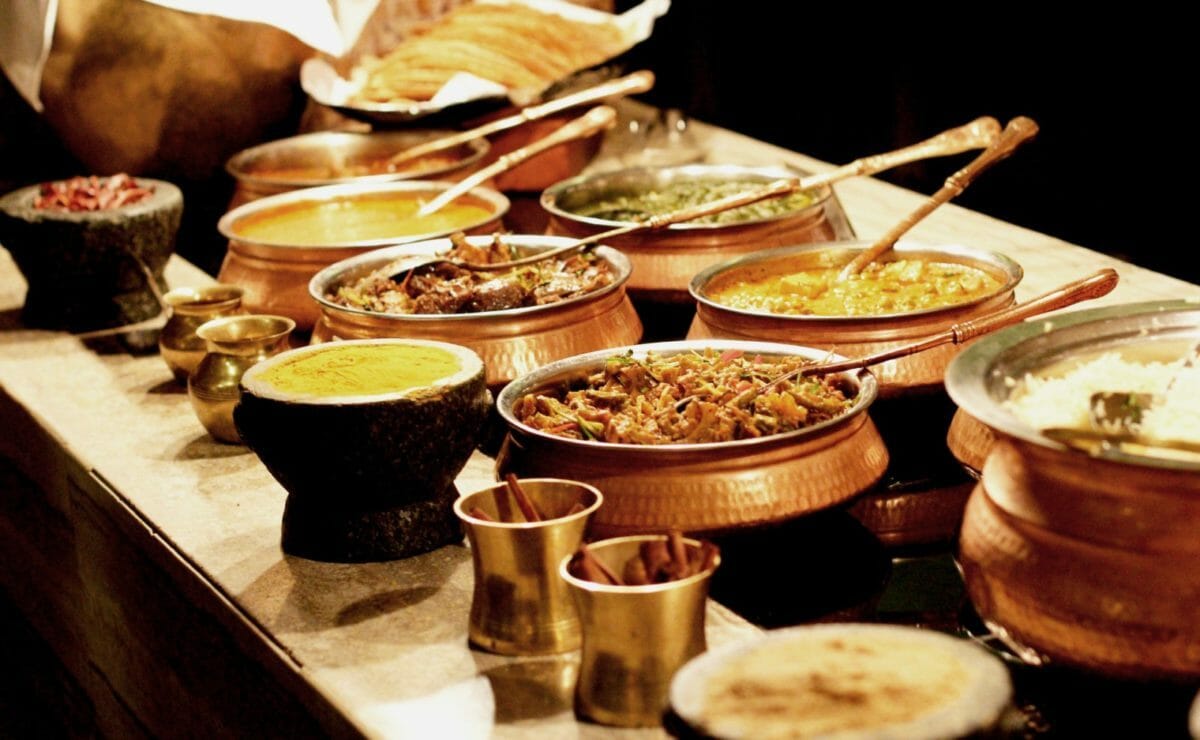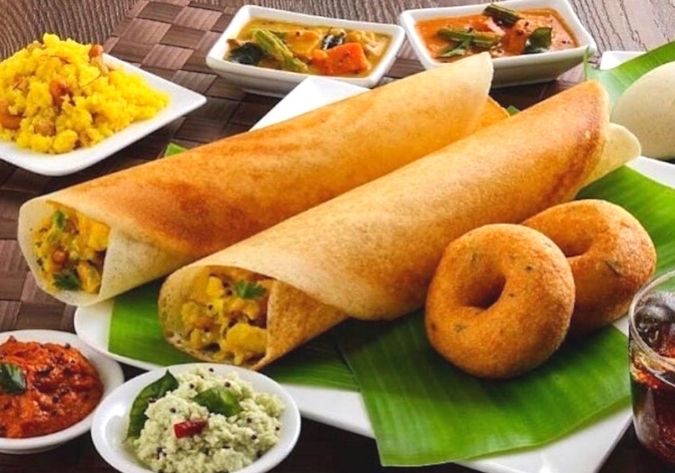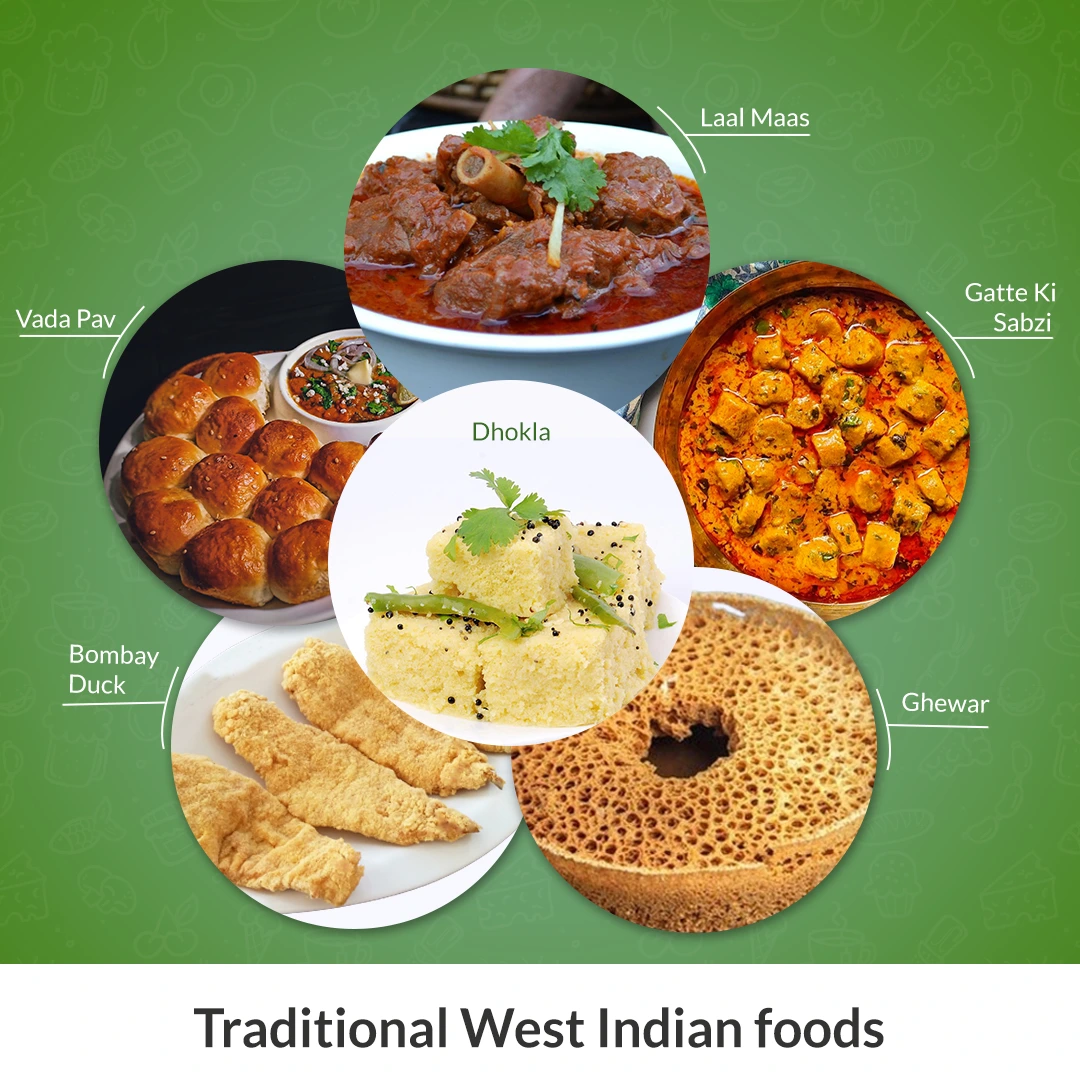Traditional Indian food 29 Famous Food Of Indian States
traditional indian food 29 Famous Food Of Indian States

"traditional indian food" - Indian cuisine is one of the most popular cuisines in the world, known for its diverse flavors and spices. It is a fusion of different regional cuisines that vary greatly in terms of taste, texture, and ingredients. From North to South and East to West, each region has its own unique style of cooking that is deeply rooted in its culture and traditions.
The cuisine of India has been influenced by various factors, such as the country's geography, history, and religion. India is a land of diverse cultures and religions, and this diversity is reflected in its food as well. The cuisine of India is a blend of various ingredients and flavors that are used to create delicious dishes.
Traditional Indian food is not just about taste but also about the nutritional value it offers. Indian cuisine is rich in protein, fiber, and other essential nutrients that make it a healthy choice for food lovers. The use of various herbs and spices in Indian cuisine also adds to its nutritional value. These herbs and spices not only add flavor to the dishes but also have medicinal properties that make them beneficial for health.
Indian cuisine is also known for its vegetarian and non-vegetarian dishes. The vegetarian dishes include dal, chana masala, baingan bharta, and paneer dishes, while the non-vegetarian dishes include chicken, fish, lamb, and goat dishes. The use of various spices and herbs in these dishes adds to their flavor and taste.
In conclusion, the traditional Indian food is a blend of various regional cuisines that are deeply rooted in the culture and traditions of India. Indian cuisine is not just about taste but also about the nutritional value it offers. It is a healthy choice for food lovers who want to enjoy delicious food without compromising on their health. So, the next time you visit an Indian restaurant or cook an Indian dish, remember the rich heritage and diversity that goes into making it.

Indian cuisine is a reflection of the country's diverse culture and traditions. It is a blend of various spices, herbs, and vegetables that are used to create delicious dishes. Traditional Indian food is not just about taste but also about the nutritional value it offers. Indian cuisine is rich in protein, fiber, and other essential nutrients that make it a healthy choice for food lovers. Here are the four main types of traditional Indian food:
- North Indian Cuisine:
North Indian cuisine is known for its rich and creamy dishes. It is mainly characterized by the use of dairy products such as ghee, cream, and paneer. The most popular dishes include butter chicken, tandoori chicken, and biryani. Other popular dishes include dal makhani, naan, and samosas.
- South Indian Cuisine:
South Indian cuisine is known for its tangy and spicy dishes. It is mainly characterized by the use of coconut, curry leaves, and tamarind. The most popular dishes include dosa, idli, and sambar. Other popular dishes include rasam, vada, and coconut chutney.
- East Indian Cuisine:
East Indian cuisine is known for its simple yet flavorful dishes. It is mainly characterized by the use of mustard oil, panch phoron (a blend of five spices), and fish. The most popular dishes include fish curry, rice, and dal. Other popular dishes include luchi, alu posto, and shukto.
- West Indian Cuisine:
West Indian cuisine is known for its seafood dishes and spicy curries. It is mainly characterized by the use of coconut, kokum, and vinegar. The most popular dishes include vindaloo, fish fry, and sorpotel. Other popular dishes include pav bhaji, chicken xacuti, and seafood platters.
In conclusion, Indian cuisine is a blend of various regional cuisines that are deeply rooted in the culture and traditions of India. Each region has its own unique style of cooking that is characterized by the use of different ingredients and flavors. Indian cuisine is not just about taste but also about the nutritional value it offers. It is a healthy choice for food lovers who want to enjoy delicious food without compromising on their health.

North Indian cuisine is one of the most popular and widely consumed cuisines in India. It is characterized by the use of dairy products, wheat flour, and a variety of spices. The cuisine of North India has been influenced by the Mughal era, and it is known for its rich, creamy and flavorful dishes. Here are some examples of popular North Indian dishes:
-
Butter Chicken: Butter chicken is one of the most famous North Indian dishes. It is made with boneless chicken cooked in a creamy tomato-based gravy, which is seasoned with a variety of spices such as garam masala, cumin, and coriander.
-
Tandoori Chicken: Tandoori chicken is a popular North Indian dish made by marinating chicken in a blend of yogurt and spices, and then cooking it in a traditional clay oven called a tandoor. The dish is known for its smoky flavor and is often served with mint chutney.
-
Biryani: Biryani is a rice-based dish that is popular all over India. It is made by layering cooked rice with spiced vegetables or meat, and then steaming it to perfection. The dish is often served with raita and papadum.
-
Naan: Naan is a popular Indian bread that is made with wheat flour and baked in a tandoor. It is usually served hot and is perfect for scooping up flavorful curries or eaten on its own.
-
Samosas: Samosas are a popular North Indian snack made by stuffing spiced potatoes and peas into a triangular pastry and deep-frying it until crispy. They are often served with mint chutney and tamarind chutney.
-
Chana Masala: Chana Masala is a vegetarian dish made with chickpeas cooked in a tomato-based gravy, seasoned with a variety of spices such as cumin, coriander, and turmeric.
-
Paneer Tikka: Paneer Tikka is a vegetarian dish made with marinated cubes of paneer (Indian cottage cheese) that are grilled to perfection. It is often served with mint chutney and onion rings.
In conclusion, North Indian cuisine is rich in flavors and textures, and it is known for its rich and creamy dishes. It offers a variety of vegetarian and non-vegetarian dishes that are perfect for food lovers who enjoy bold flavors and spicy food.

South Indian cuisine is known for its spicy and tangy flavors, and it is popular all over India. The cuisine of South India is mainly characterized by the use of rice, coconut, and a variety of spices. It offers a variety of vegetarian and non-vegetarian dishes that are perfect for food lovers who enjoy bold and flavorful food. Here are some examples of popular South Indian dishes:
-
Dosa: Dosa is a popular South Indian breakfast dish that is made with fermented rice and lentil batter. It is a crispy and savory crepe that is often served with coconut chutney and sambar.
-
Idli: Idli is another popular South Indian breakfast dish that is made with fermented rice and lentil batter. It is a soft and fluffy steamed cake that is often served with coconut chutney and sambar.
-
Sambar: Sambar is a spicy and tangy lentil-based soup that is a staple in South Indian cuisine. It is made with lentils, vegetables, tamarind, and a variety of spices, and it is often served with rice or dosa.
-
Rasam: Rasam is another tangy soup that is popular in South India. It is made with tamarind, tomatoes, and a variety of spices such as cumin, coriander, and black pepper. It is often served with rice or as a soup.
-
Vada: Vada is a savory doughnut-shaped snack that is made with lentil batter and deep-fried until crispy. It is often served with coconut chutney and sambar.
-
Coconut Chutney: Coconut chutney is a popular South Indian condiment that is made with coconut, roasted chana dal, green chili, and other spices. It is often served with dosa, idli, and vada.
-
Chicken Chettinad: Chicken Chettinad is a popular South Indian non-vegetarian dish that is known for its spicy and flavorful taste. It is made with boneless chicken cooked in a gravy made with a variety of spices such as fennel, cumin, coriander, and red chili.
In conclusion, South Indian cuisine is known for its bold and spicy flavors and offers a variety of vegetarian and non-vegetarian dishes that are perfect for food lovers who enjoy bold and flavorful food.

East Indian cuisine is known for its subtle and delicate flavors, and it is popular in the eastern part of India. The cuisine of East India is mainly characterized by the use of fish, rice, and a variety of spices. It offers a variety of vegetarian and non-vegetarian dishes that are perfect for food lovers who enjoy light and flavorful food. Here are some examples of popular East Indian dishes:
-
Chingri Malai Curry: Chingri Malai Curry is a popular East Indian non-vegetarian dish made with prawns cooked in a coconut milk-based gravy that is seasoned with a variety of spices such as cumin, coriander, and turmeric.
-
Rosogolla: Rosogolla is a popular East Indian sweet dish made with chhena (cottage cheese) balls that are soaked in sugar syrup. It is a soft and spongy dessert that is often served cold.
-
Sandesh: Sandesh is another popular East Indian sweet dish made with chhena (cottage cheese) and sugar. It is a soft and creamy dessert that is often flavored with saffron or rose water.
-
Luchi: Luchi is a popular East Indian breakfast dish made with deep-fried flatbread that is made with maida (refined wheat flour). It is often served with aloo dum or cholar dal.
-
Pitha: Pitha is a popular East Indian snack that is made with rice flour and filled with coconut or jaggery. It is often steamed or deep-fried and is a popular snack during festivals.
-
Aloo Posto: Aloo Posto is a popular vegetarian dish made with potatoes cooked in a poppy seed-based gravy that is seasoned with a variety of spices such as cumin, coriander, and red chili.
-
Cholar Dal: Cholar Dal is a popular East Indian vegetarian dish made with chana dal (split chickpeas) that is cooked in a coconut milk-based gravy that is seasoned with a variety of spices such as cumin, coriander, and turmeric.
In conclusion, East Indian cuisine is known for its subtle and delicate flavors and offers a variety of vegetarian and non-vegetarian dishes that are perfect for food lovers who enjoy light and flavorful food. It is characterized by the use of fish, rice, and a variety of spices, and it is a popular cuisine in the eastern part of India.

West Indian cuisine is known for its bold and spicy flavors, and it is popular in the western part of India. The cuisine of West India is mainly characterized by the use of seafood, coconut, and a variety of spices. It offers a variety of vegetarian and non-vegetarian dishes that are perfect for food lovers who enjoy bold and flavorful food. Here are some examples of popular West Indian dishes:
-
Vindaloo: Vindaloo is a popular West Indian non-vegetarian dish that is known for its spicy and tangy taste. It is made with meat (usually pork or chicken) that is marinated in a mixture of vinegar, garlic, ginger, and a variety of spices such as cumin, coriander, and red chili.
-
Pav Bhaji: Pav Bhaji is a popular West Indian vegetarian dish that is made with mashed vegetables such as potatoes, peas, and carrots that are cooked in a tomato-based gravy that is seasoned with a variety of spices such as cumin, coriander, and red chili. It is often served with buttered pav (bun).
-
Fish Curry: Fish Curry is a popular West Indian non-vegetarian dish that is made with fish cooked in a coconut milk-based gravy that is seasoned with a variety of spices such as cumin, coriander, and turmeric.
-
Goan Fish Fry: Goan Fish Fry is a popular West Indian non-vegetarian dish that is made with fish that is marinated in a mixture of spices such as cumin, coriander, and red chili and then deep-fried until crispy.
-
Khandvi: Khandvi is a popular West Indian vegetarian snack that is made with gram flour and yogurt that is steamed and then rolled into thin, bite-sized rolls. It is often served with green chutney.
-
Bhakri: Bhakri is a popular West Indian bread that is made with jowar (sorghum) flour. It is a flatbread that is often served with vegetables or dal.
-
Batata Vada: Batata Vada is a popular West Indian vegetarian snack that is made with mashed potatoes that are mixed with spices and then deep-fried until crispy. It is often served with green chutney.
In conclusion, West Indian cuisine is known for its bold and spicy flavors and offers a variety of vegetarian and non-vegetarian dishes that are perfect for food lovers who enjoy bold and flavorful food. It is characterized by the use of seafood, coconut, and a variety of spices, and it is a popular cuisine in the western part of India.
Benefits of Traditional Indian Food
Traditional Indian food offers numerous health benefits due to its unique blend of spices, herbs, vegetables, and grains. Here are some of the benefits of traditional Indian food:
-
Provides balanced nutrition: Traditional Indian food is often prepared with a combination of different food groups such as vegetables, legumes, grains, and dairy products. This provides a balanced and nutritious meal that is rich in vitamins, minerals, and other essential nutrients that are necessary for optimal health.
-
Helps in weight management: Many traditional Indian dishes are low in calories and high in fiber, which helps in maintaining a healthy weight. For example, dishes such as dal, sambar, and sabzi are high in fiber and protein, which can keep you full for longer and prevent overeating.
-
Helps in digestion: Traditional Indian food is often cooked with a variety of herbs and spices such as ginger, garlic, turmeric, and cumin, which have been shown to aid in digestion. These spices help in the breakdown of food and can reduce inflammation in the gut.
-
Boosts immunity: Traditional Indian food is rich in antioxidants, which can help in boosting the immune system. For example, turmeric, which is a common spice used in many Indian dishes, has anti-inflammatory and antioxidant properties that can help in preventing chronic diseases.
-
Lowers the risk of chronic diseases: Traditional Indian food is often cooked with fresh ingredients and is low in processed and refined foods, which can lower the risk of chronic diseases such as diabetes, heart disease, and cancer. For example, a diet rich in whole grains, legumes, and vegetables has been shown to reduce the risk of heart disease.
-
Helps in stress management: Traditional Indian food is often cooked with ingredients such as cardamom, saffron, and ashwagandha, which are known for their calming and stress-relieving properties. These ingredients can help in reducing stress and promoting relaxation.
In conclusion, traditional Indian food offers numerous health benefits due to its unique blend of spices, herbs, vegetables, and grains. It provides balanced nutrition, helps in weight management, aids in digestion, boosts immunity, lowers the risk of chronic diseases, and helps in stress management. Incorporating traditional Indian food into your diet can be a delicious and healthy way to improve your overall health and wellbeing.
Conclusion
In conclusion, traditional Indian food is a rich and diverse cuisine that offers numerous health benefits and is enjoyed by people all over the world. With its unique blend of spices, herbs, vegetables, and grains, traditional Indian food provides balanced nutrition, aids in digestion, boosts immunity, and helps in stress management. Additionally, India is home to a wide range of regional cuisines, each with its own distinct flavors and dishes. From North Indian cuisine with its famous dishes like butter chicken and naan, to South Indian cuisine with its iconic dosas and idlis, and from East Indian cuisine with its delectable fish curries and mishti doi to West Indian cuisine with its bold and spicy flavors, there is something for everyone to enjoy. So, if you're looking to explore the world of traditional Indian food, start with our list of 29 famous foods from Indian states and savor the flavors of this unique and delicious cuisine.
FAQs
Q: What are some popular traditional Indian dishes? A: Some popular traditional Indian dishes include butter chicken, biryani, dosa, samosas, chole bhature, tandoori chicken, dal makhani, and masala chai.
Q: What are some common ingredients used in traditional Indian cooking? A: Some common ingredients used in traditional Indian cooking include spices such as cumin, coriander, turmeric, cardamom, and garam masala, as well as vegetables such as onions, tomatoes, and garlic, and dairy products such as ghee, paneer, and yogurt.
Q: Is traditional Indian food healthy? A: Yes, traditional Indian food can be very healthy due to its use of fresh ingredients, spices, herbs, and whole grains. It provides balanced nutrition, aids in digestion, boosts immunity, and can lower the risk of chronic diseases.
Q: What are the different regional cuisines of India? A: India has a diverse range of regional cuisines, including North Indian, South Indian, East Indian, and West Indian. Each regional cuisine has its own unique flavors, ingredients, and dishes.
Q: Can traditional Indian food be spicy? A: Yes, traditional Indian food can be spicy as it often incorporates a variety of spices and chili peppers in its dishes. However, the level of spiciness can vary depending on the dish and the region it comes from.

Post a Comment